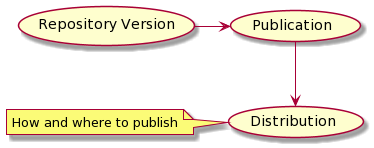Concepts and Terminology¶
This introduction presents a high level overview of Pulp terminology and concepts. It is designed to be understandable to anyone who is familiar with software management even without prior knowledge of Pulp. This document favors clarity and accuracy over ease of reading.
From a user’s perspective Pulp is a tool to manage their content. In this context, “Pulp” refers to “pulpcore and one or more plugins”. Because of its dependent relationship with plugins, pulpcore can be described as a framework for plugin development.
pulpcore is a generalized backend with a REST API and a plugin API. Users will need at least one plugin to manage Content. Each type of content unit (like rpm or deb) is defined by a plugin. Files that belong to a content unit are called Artifacts. Each content unit can have 0 or many artifacts and artifacts can be shared by multiple content units.
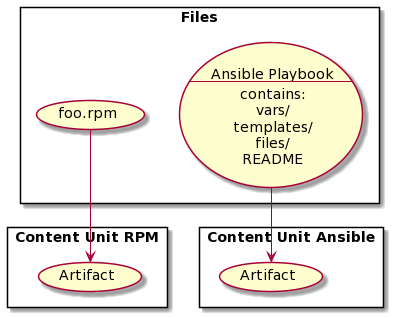
Content units in Pulp are organized by their membership in Repositories over time. Plugin users can add or remove content units to a repository. Each time the content set of a repository is changed, a new RepositoryVersion is created. Any operation such as sync that doesn’t result in a change of the content set will not produce a new repository version.
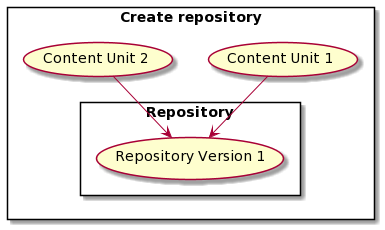
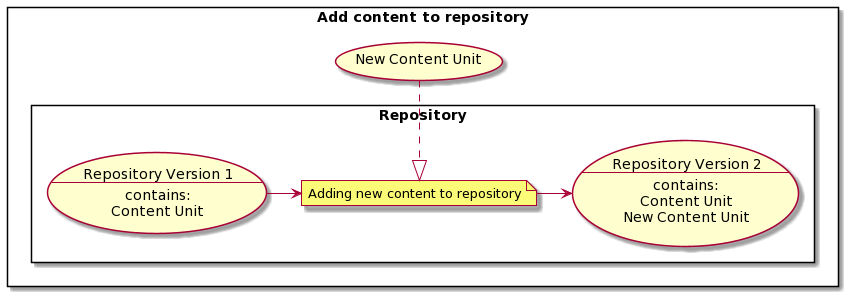
Users can inform Pulp about external sources of content units, called Remotes. Plugins can define actions to interact with those sources. For example, most or all plugins define sync to fetch content units from a remote and add them to a repository.
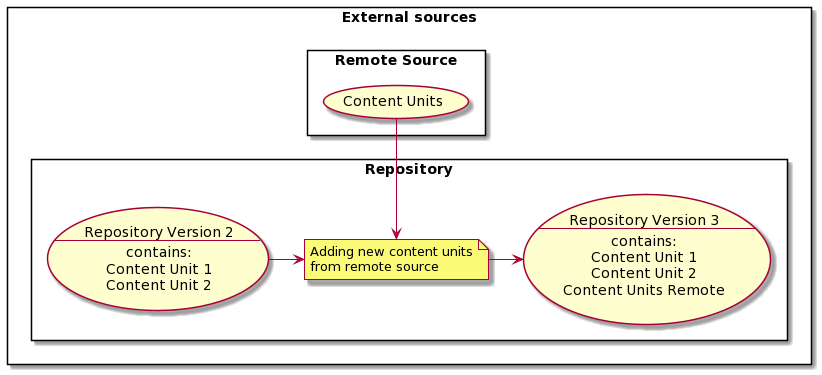
All content that is managed by Pulp can be hosted by the content app. Users create a Publication for a content set in a repository version. A publication consists of the metadata of the content set and the artifacts of each content unit in the content set. To host a publication, it must be assigned to a Distribution, which determines how and where a publication is served.
